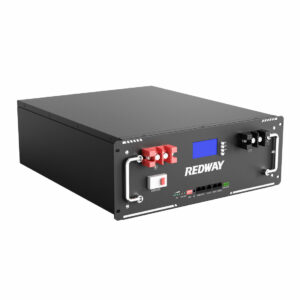How do you size a battery bank for a house?
Sizing a residential battery bank requires calculating daily energy consumption, backup duration needs, and adjusting for system losses. Key steps include summing appliance watt-hours, multiplying by desired autonomy days, and incorporating depth of discharge (DoD) limits (typically 80% for lithium batteries). Always account for inverter efficiency (90-95%) and temperature derating (10-20% in sub-0°C climates). Pro Tip: Add 15-25% buffer capacity for unexpected loads and battery aging.
What’s the core formula for battery bank sizing?
Base capacity = (Daily kWh usage × Autonomy days) ÷ (DoD × Efficiency). For 20kWh/day needing 2-day backup: (20×2) ÷ (0.8×0.95) = 52.63kWh. Depth of discharge and round-trip efficiency critically impact final size.

Start by auditing all critical loads—refrigerators (1.5kWh/day), lights (0.5kWh), and medical equipment (3kWh). Multiply each device’s wattage by usage hours to get daily kWh. But what if peak loads exceed inverter capacity? Parallel battery strings help, though they require voltage matching. For example, a 10kWh system with 90% efficiency and 80% DoD effectively delivers 7.2kWh. Pro Tip: Use NEMA load calculators for accurate appliance profiling.
How do voltage and battery chemistry affect sizing?
48V systems dominate home storage for balance between cable thickness and component costs. Lithium-ion (LiFePO4) provides 95% round-trip efficiency vs. 80% for lead-acid, reducing required capacity by 18%.
Higher voltage systems (e.g., 400V) minimize current but require specialized inverters. Consider this: A 10kWh LiFePO4 bank at 48V needs 210Ah capacity (10,000Wh ÷ 48V ≈ 208Ah). The same capacity in lead-acid would require 312Ah (10,000Wh ÷ (48V×0.8×0.85)). Always verify battery BMS compatibility when stacking modules. Pro Tip: Cell balancing becomes crucial beyond 4 parallel strings to prevent thermal runaway.
| Chemistry | DoD | Cycle Life |
|---|---|---|
| LiFePO4 | 80-90% | 6,000 |
| NMC | 70-80% | 3,000 |
| Lead-Acid | 50% | 500 |
Why factor in temperature derating?
Battery capacity drops 1-2% per °C below 25°C. Sub-zero operation requires heating systems that consume 5-15% of stored energy, effectively increasing needed capacity.
In Minnesota winters (-10°C), a 10kWh nominal bank might deliver only 8kWh without heating. Some lithium batteries integrate self-heating below 0°C, but this draws 200-400W continuously. Practical solution? Oversize by 20% in cold climates and insulate battery enclosures. Remember: Thermal management isn’t optional—it’s what separates professional installations from DIY failures.
How does load type impact capacity needs?
Motor-driven appliances (well pumps, AC units) create 6x surge currents requiring inverters with high peak power. Battery banks must handle these brief but critical loads without voltage sag triggering shutdowns.
A 1HP well pump (1,200W running) needs 7,200W startup surge. For 48V systems, this demands 150A surge capability (7,200W ÷ 48V). Batteries with 1C continuous/3C pulse rates can handle this if cabling and connectors are rated appropriately. Pro Tip: Use soft starters on heavy motors to reduce surge demands by 60%.
| Appliance | Running Watts | Surge Watts |
|---|---|---|
| Refrigerator | 200 | 1,200 |
| AC Unit | 1,500 | 4,500 |
| Circular Saw | 1,400 | 2,800 |
What about future expansion needs?
Allocate 25% extra busbar capacity and modular battery designs. Stackable units (e.g., 5kWh modules) let you grow storage incrementally without replacing entire systems.
When planning, ensure your inverter can accept additional battery strings. Some hybrid inverters max out at 4 parallel units—exceeding this risks communication errors. Future-proof by choosing systems with expandable battery management protocols like CAN BUS 2.0. Remember: Adding batteries later often costs 30% more than initial overbuilding due to labor.
RackBattery Expert Insight
FAQs
Can I mix old and new battery modules?
Never mix batteries with >20% capacity difference—older cells will overdischarge, causing premature failure.
How often should I recalibrate capacity?
Perform full discharge tests every 6 months; lithium batteries need SOC recalibration after 30 partial cycles.
Does solar panel size affect battery sizing?
Only in off-grid systems—grid-tied batteries size based on backup needs, not PV production.
